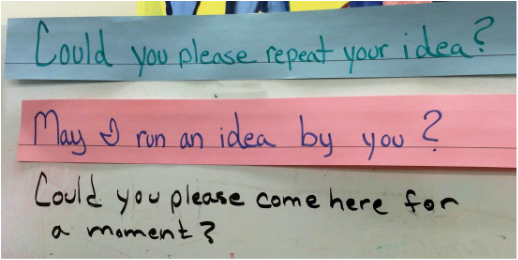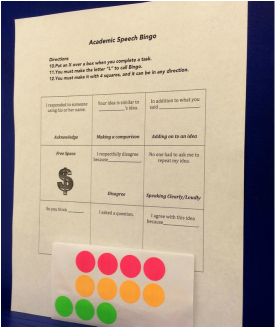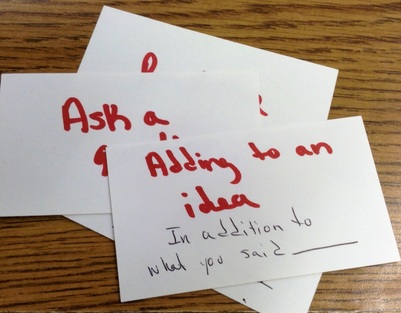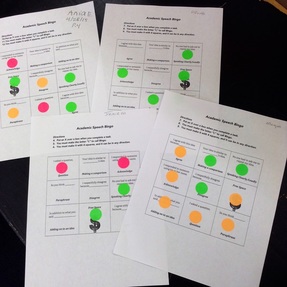|
Since I have been using the English 3D program by Dr. Kate Kinsella, I have truly realized the value of having students use and practice academic language as much as possible. I have reminders up in the classroom for formal ways to make a request: However, I’m still trying to come up with new activities to generate student speech, and this is where the idea for Academic Speech Bingo came from. Students prepared responses the previous day for the following unit question: “What are some ways adolescents can prepare for their future careers in high school?” Each student had two ideas to share, and we formed a circle. They were then given a bingo card and stickers to mark with: Just to clarify how this was scaffolded: the previous day we practiced responding in all the ways that were on the bingo card in groups of 4. Students drew a response card (see picture below) before they had to listen to a 1-minute student presentation (this presentation was on a political cartoon project they had just finished). After the presentation, they responded per the instructions on their card. This was incredibly effective because the students had a purpose for listening/responding before they began to listen. Thus, their responses were stronger than I had ever heard! Of course we set a purpose as a pre-reading activity all the time, and I usually set a purpose for them before we listen, but giving them a response prompt honed the purpose of listening even further, which led to more specific responses. Finally, during bingo, after each individual student shared an idea the other students were instructed to raise their hands to respond. Students called on each other and as many students could respond to one person as they wanted to. In order to get bingo they had to form an “L” shape with 4 squares in any direction. I had 1st, 2nd, 3rd, place prizes for bingo winners, but in addition to that I had established how I was going to grade them: 4 or more squares marked= A; 3 squares marked= B; 2 squares marked =C; 2 squares marked=D. Here are some finished cards: Ultimately, I will do this again. The highlight of the activity was when one student shared his idea and 4 or 5 students raised their hands. He was able to call on all of them, and they all did something different! Someone agreed with his idea, someone paraphrased it, someone added to it, and someone asked a question! If a stranger had walked into the classroom it would have looked as if the students were independently conducting a Socratic seminar, and I think this might be the first step towards that goal! The document uploaded below is the bingo cards. The tasks are the same on each card, but they are in a different order.
2 Comments
Leave a Reply. |
Archives
November 2023
AuthorMs. Young is a teacher who wants to keep a record of what works! Categories |
||||||




 RSS Feed
RSS Feed